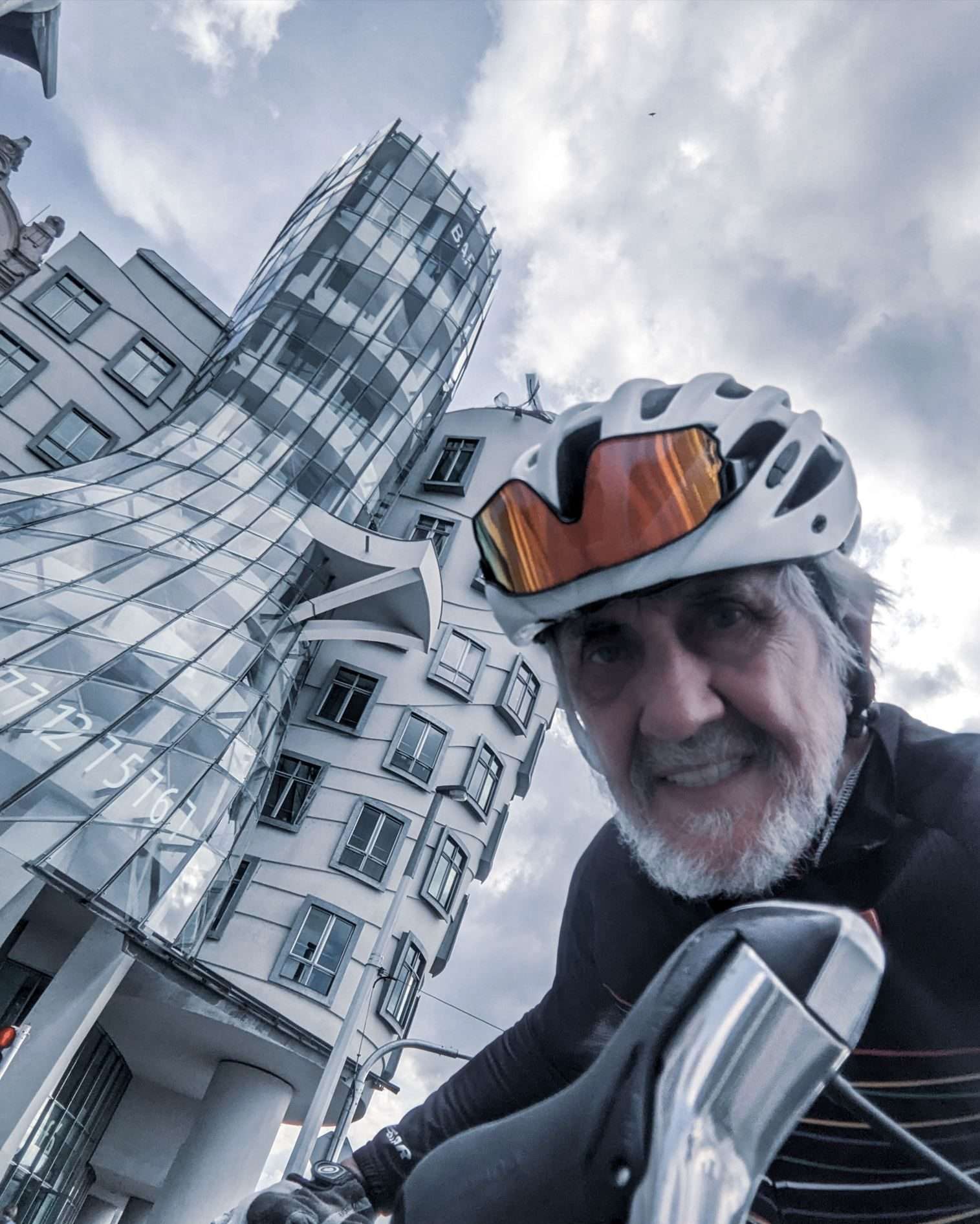Prague is a captivating destination that beautifully weaves together its rich architectural heritage with a complex political history. Exploring Prague by a road bike may not appeal to every avid cyclist, but an idea including even Prague’s historical core to your ride is workable, even though you may have to walk at time, like crossing the splendid Charles Bridge, simply for sheer crowds of tourists that cross it during the day. The Dancing House, on another hand, stands a little out of the most pedestrian-traffic-congested parts of Prague, thus make it a stop not miss.
The Dancing House is a modern architectural gem, representing a stark contrast to Prague’s historic skyline. Designed by Frank Gehry and Vlado Milunić, it’s a whimsical masterpiece. Also known as the Fred and Ginger building, appears as if two dancers are in mid-twirl. While some critics initially found it controversial, it has become an iconic symbol of Prague’s embrace of contemporary architecture.
Prague is a city that boasts a stunning mix of architectural styles. The city’s architecture spans centuries, from the Romanesque and Gothic marvels of St. Vitus Cathedral to the intricate Renaissance facades of the Old Town Square. The Baroque architecture seen in buildings like St. Nicholas Church adds to the city’s architectural tapestry. What’s intriguing is how these styles coexist harmoniously in the cityscape, creating a unique visual experience.
Undeniably, Prague’s history is also marked by its years under communist rule, which significantly affected its society and its architecture. During this period, the city saw the construction of stark, functionalist buildings that reflected the ideology of the time. While many of these structures lack the beauty of classical architectural styles, Romanesque and Gothic to Renaissance and Baroque, they are a testament to Prague’s illustrious history.
The Velvet Revolution, a pivotal moment in Czech history, took place in 1989, leading to the fall of the communist regime. It was a peaceful, people-driven revolution that brought about democracy and freedom. Wenceslas Square, where massive protests occurred, stands as a symbol of this transformation. The Velvet Revolution is a reminder of the power of collective action and the resilience of a society seeking liberty. The Dancing House reflects some of that spirit – a craving to change and move on while preserving the city’s cultural identity. Prague is a place where architecture and history are intertwined, offering to cyclists enriching and visually stunning experience. While road cycling Prague, you may best focus on Prague’s perimeter rather than its historical core, which is ideally explored on foot, there are landmarks not to miss near its center and marvel at, and the Dancing House is certainly one of them.
